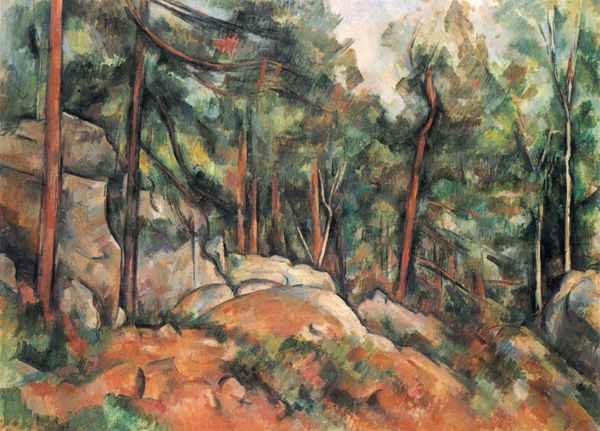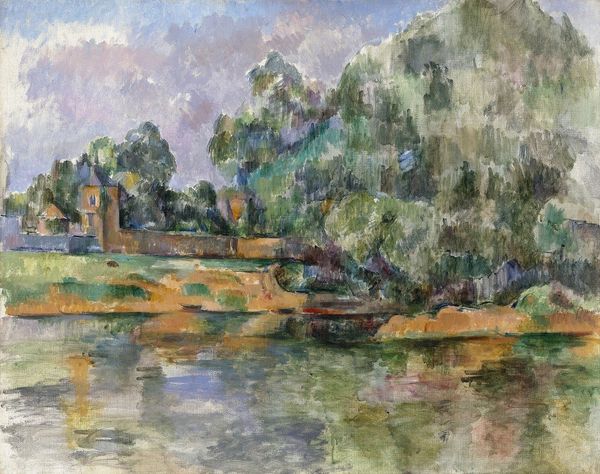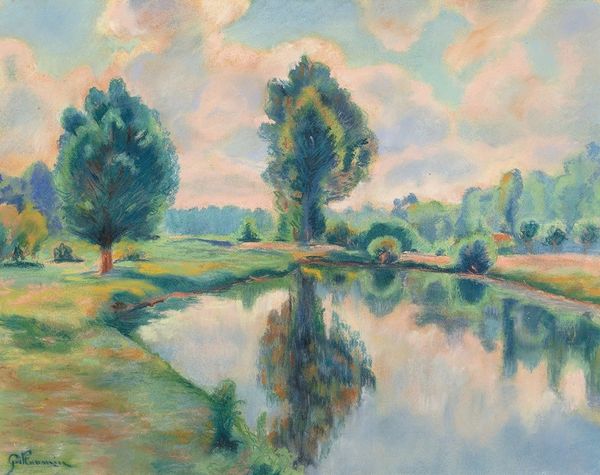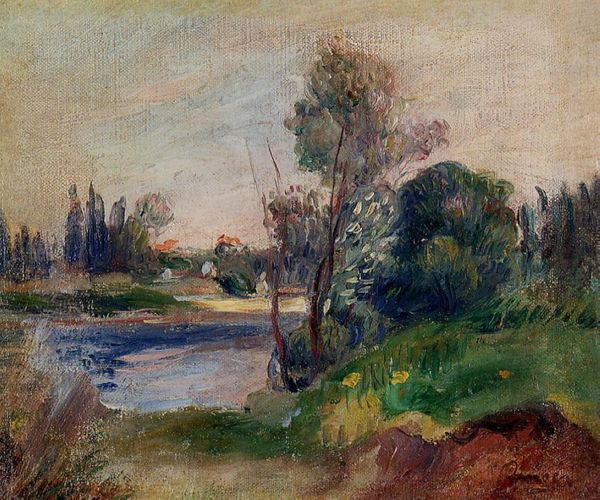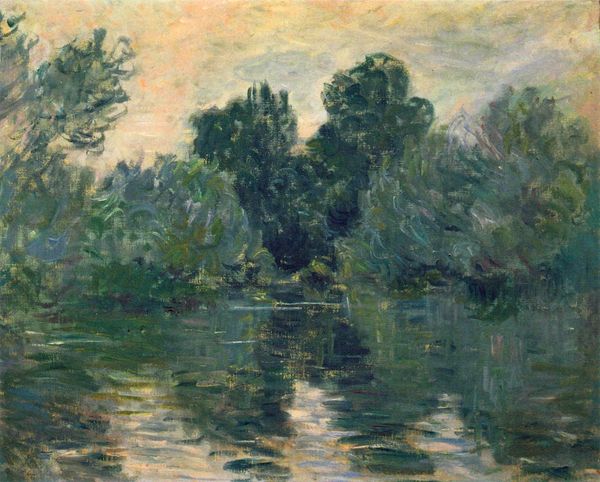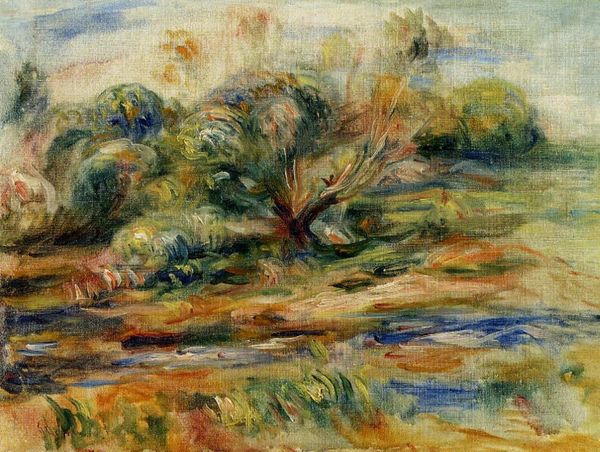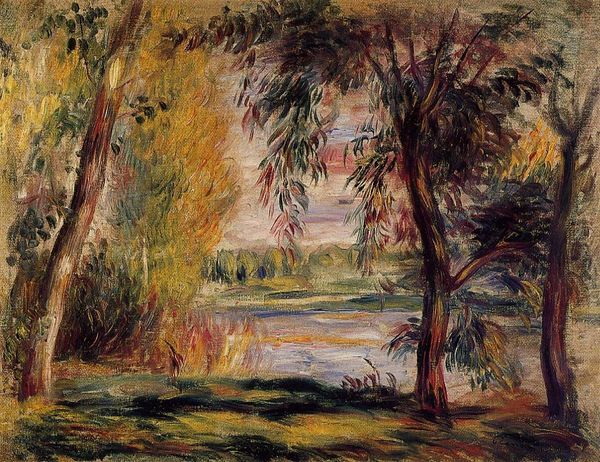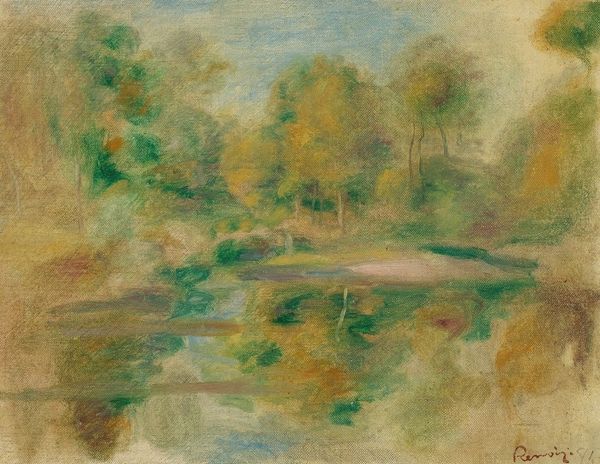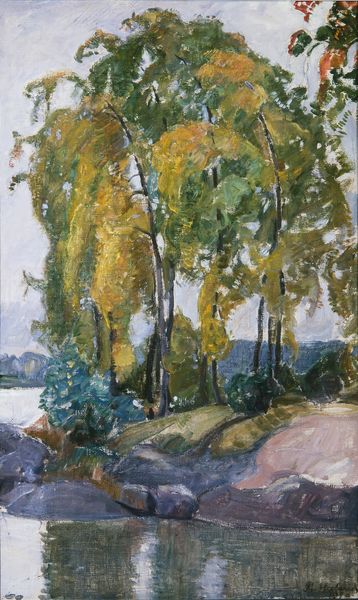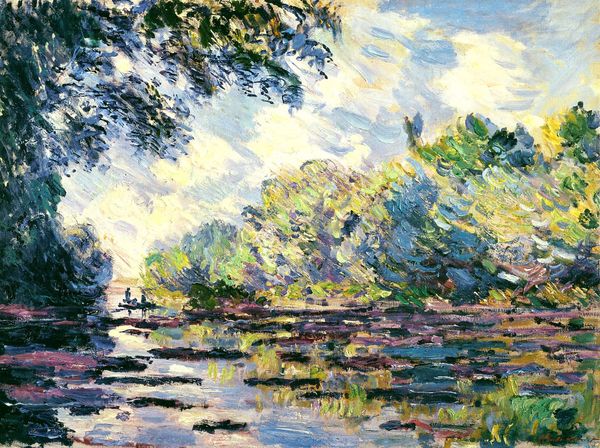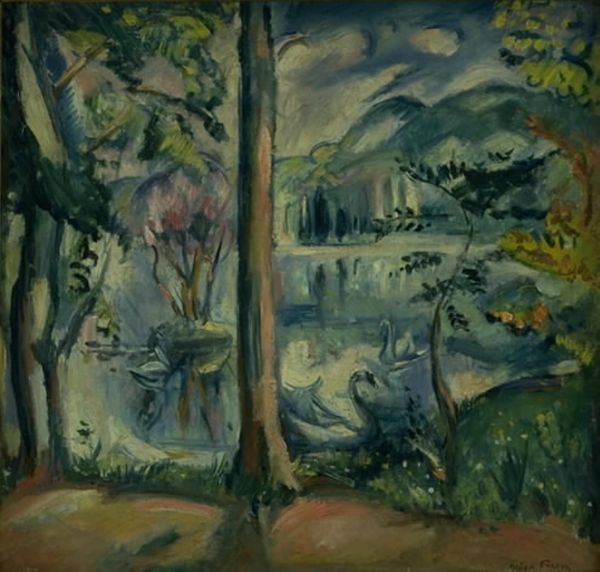
painting, oil-paint, impasto
#
painting
#
oil-paint
#
landscape
#
form
#
oil painting
#
impasto
#
post-impressionism
#
realism
Copyright: Public Domain: Artvee
Editor: Here we have Cézanne's "The Brook," painted between 1895 and 1900, using oil on canvas. It's striking how the brushstrokes feel almost like blocks of color, creating this vibrant yet slightly disorienting landscape. What do you see in this piece? Curator: I see a subversion of the expected, a challenging of the established order within landscape painting. Think about the Impressionists, Cézanne's contemporaries. Where they sought to capture fleeting moments of light, Cézanne is dismantling and rebuilding nature, grappling with form and structure in a way that questions our very perception of the natural world. This almost violent brushwork—how might we see that as a response to the socio-political climate of the time? Editor: That's interesting! So you’re saying that the fragmented style reflects a larger societal fragmentation? Curator: Precisely. Cézanne was painting during a period of immense social upheaval, of burgeoning industrialization and the rise of mass culture. Is he perhaps reflecting a sense of alienation from nature, a loss of innocence in the face of modernity? Or is he forging a new visual language to capture the complexity of lived experience in a rapidly changing world? Editor: I hadn't thought about it that way. I was focused on the purely visual aspects, the composition and the color. Curator: But those elements are never truly separate from the broader context, are they? Think about the legacy of colonialism inherent in the very concept of the 'landscape' and who had the power to own it as subject matter, for art's sake or otherwise... Cézanne makes us question who possesses not only the land but also the gaze. Editor: This has completely changed how I see this painting. I'm beginning to think of this "Brook" less as a tranquil scene and more as a commentary on societal shifts. Curator: Exactly! Art invites these dialogues. We bring our own situated perspectives into these interpretations and by doing so, enrich and give context to a new understanding.
Comments
No comments
Be the first to comment and join the conversation on the ultimate creative platform.
